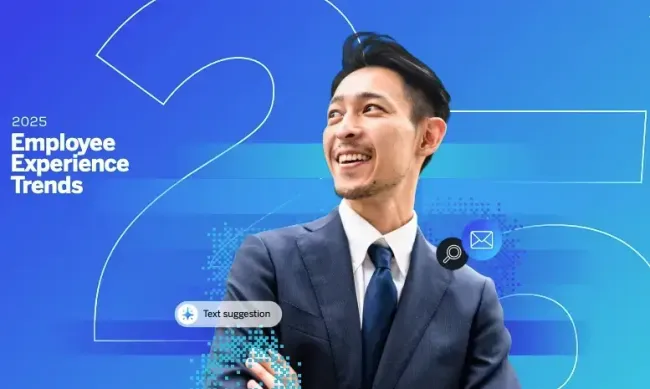What is an employee persona?
Personas are a tool that have been used in marketing for decades and, more recently, in customer experience programs as a way to understand the moments that matter for certain cohorts of customers.
They’re now becoming more commonplace in HR too as organizations understand the need to deliver more personalized, tailored experiences to their employees as part of their employee experience programs.
An employee persona is essentially a semi-fictional representation of a group of employees with similar traits, experiences and behaviors. They’re based on the data and insights you have into the individuals that make up your workforce and brings them to life by building a narrative around them.
Employee personas are a useful way to build a narrative around different groups within the workforce, helping HR teams to get closer to their people and to design experiences tailored to meet their needs.
eBook: Use Employee Lifecycle Feedback to improve your EX
Why have employee personas?
To design successful employee experiences, you need to understand the views, challenges and perspectives of your end customer — your organization’s employees. It is therefore essential that you build a solid understanding of them, and that’s where employee personas come in.
After all, no two employees are the same. Think about your own team: how many of your colleagues have the same career goals, expectations from the organization, or behave in the same way?
Now extend that across the entire organization and it’s immediately clear just how much differentiation there is across the workforce. That’s a good thing by the way - diversity is the key to innovation!
Organizations that are able to tailor the experiences they offer to employees will be much more successful in driving engagement as they’re likely to resonate and appeal to a much larger group than a broad-brush approach.
Of course, personalizing every experience for every employee can be a challenge, if not nearly impossible. Employee personas help you to design experiences around a handful of distinct employee types, making it much more efficient and cost-effective to create more personalized experiences that are likely to resonate with employees.
With your employee personas in hand, you can also run employee journey mapping exercises for each one to start to pinpoint the moments that matter most for different groups, giving you a roadmap of improvements and actions to increase engagement, productivity and retention in the workforce.
Request a demo and see EmployeeXM in action
6 steps to designing your employee personas
1. Gather Feedback Across the Organization
Most organizations choose to combine qualitative and quantitative research as they build out their personas.
It’s best to start with a listening strategy to gather feedback at scale. This allows you to take the pulse of the entire organization, providing plenty of data for you to start to spot patterns and trends that will form the basis of your employee personas.
Your employee listening program should then link back to your goals and focus on asking questions that dig into people’s goals, motivations and pain points. It’s also useful to ask them about these at different stages in the employee lifecycle, so you can build up a better picture of the different moments that matter for different personas.
2. Identify Potential Cohorts
Now you have the data, you can apply analytics to identify the most common pain points, expectations and behaviors.
At this stage you should be able to see clusters of shared attributes — these are the foundations of your different personas, showing you the shared goals, motivations and pain points amongst different groups in the workforce.
3. Add Demographic Information
Once you know the different cohorts, it’s time to understand what demographics these groups share.
The most efficient way to do this is by linking your survey tool with your HRIS, pulling in any relevant operational data from basic information like age, role, time in the company, to more personal information such as when they were last promoted, or which training courses they’ve attended.
Once your data is analyzed, you’ll be able to spot commonalities between the cohorts in the previous step, adding more color to your persona.
4. Deep Dive Interviews
Now you have an understanding of who your different personas are in terms of their shared motivations and even some common demographics, you can start to create more of a narrative around them through face-to-face interviews.
Based on your data so far, identify a handful of people from each cohort (try to include a diverse range of ages, role and seniority here) and interview them to dig deeper into some of their answers.
5. Bring It All Together
Once you have all the information you need, you’ll need to bring it together to publish a set of personas. This is an important piece that personifies the different cohorts and brings them to life for people around the organization.
These typically include all the relevant information from your research (eg, career goals, frustration, expectations, etc.) as well as fictional details like their name, back story and even a picture – this should be informed by your face-to-face interviews and should represent the cohort as a whole rather than mimicking just one person you interviewed in the process.
6. Validate Your Personas
One of the best ways to make sure you’re on the right track is to go back to your employees to validate your personas. You could survey the entire organization again to see which personas resonate best, or you could create smaller focus groups and gather their feedback before you consider your employee personas as final.
Collect and apply employee feedback with our 360-Feedback eBook
How to use your employee personas to improve the experience
Now you have a set of employee personas, it’s time to use them to improve the employee experience — and it starts with employee journey mapping.
Journey mapping is a technique that takes the entire employee journey and break it down into individual moments, helping you to identify the moments that matter most where you can step in to improve the experience.
You can find out more about how to run a journey mapping exercise here.
With your journey mapping exercise complete, you can then start to design feedback programs to gather feedback at the moments that matter and start to surface insights into how to improve the experience for each cohort.
By installing feedback mechanisms at these moments, targeted at the employees it’s most relevant to (based on your personas and all the demographic information you gathered), you can start to get a better understanding of the actions you need to take to improve the experience.
This approach helps you to personalize the experience, getting to know your employees inside out and identifying the actions that will have the biggest impact on engagement, productivity, retention and of course, deliver maximum impact back to the business.
Understand the Moments that Matter Most to Your Employees



